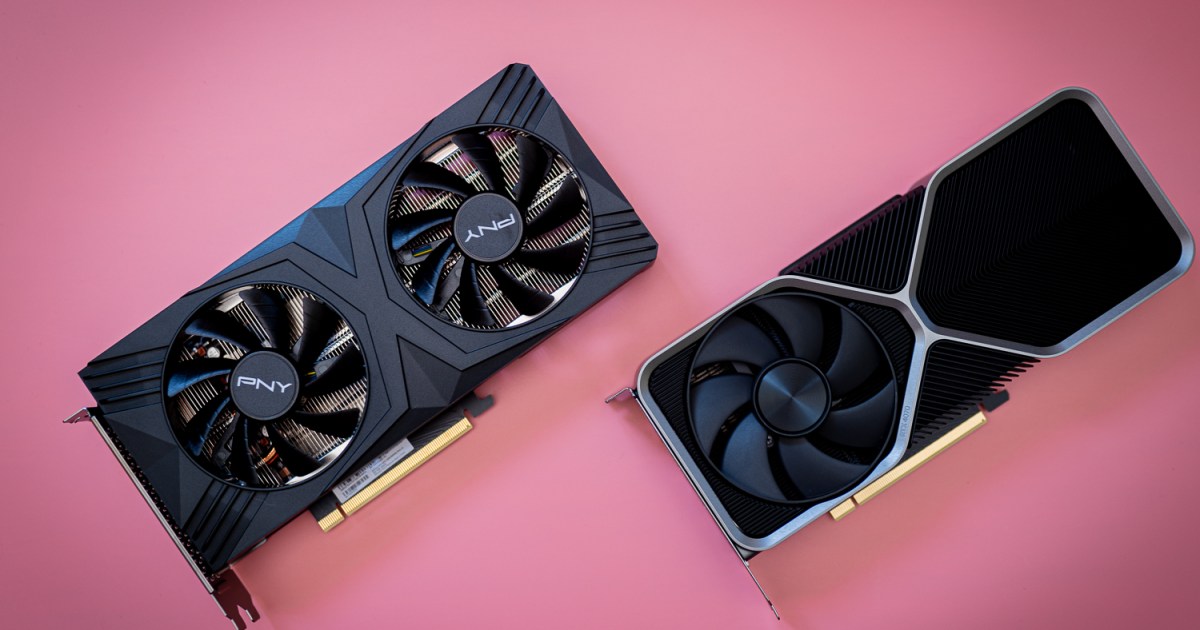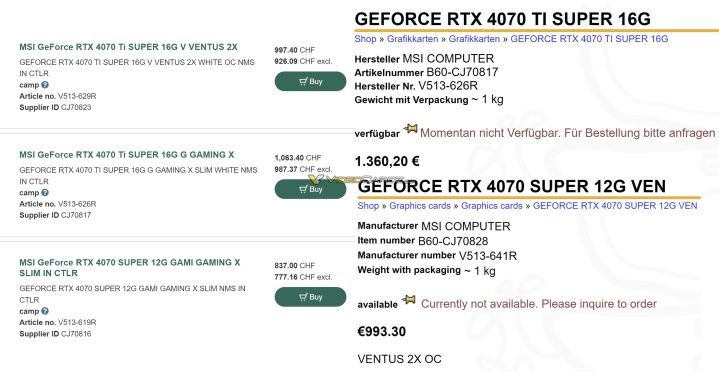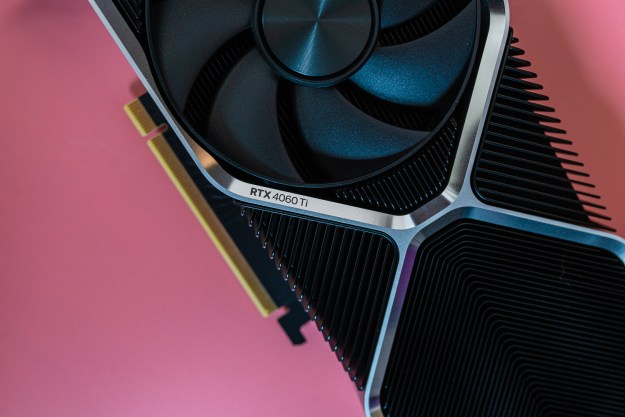At this point, we know just about everything about Nvidia’s new GPUs
Nvidia is expected to launch a new lineup of RTX 40 Super series of GPUs, and the leaks just keep coming.

The leaks on Nvidia’s new Super GPUs are getting out of hand. The slow drip of information has been steady for many months, leaving very few details on the cards when they actually get announced.
We’re talking about the RTX 4080 Super, RTX 4070 Ti Super, and RTX 4070 Super, which will be the first three models in the lineup. Thanks to various retailers and distributors all around the globe, we already have a substantial amount of information about the upcoming GPUs. The information might not all be perfect, but it paints a pretty clear picture of what these cards will be like.
ho-ho- pic.twitter.com/i13OUuPhBh
— 188号 (@momomo_us) December 25, 2023
The RTX 4080 Super is expected to feature a modest speed increase to 23Gbps for its 16GB GDDR6X memory. This will result in a 2.6% boost in bandwidth, achieving 736GB/s across the 256-bit memory bus. On the other hand, the RTX 4070Ti/4070 Super will continue to utilize a 21Gbps memory speed.
The clock speeds will also see minor adjustments, with the RTX 4080 Super moving from 2205/2505 MHz (base/boost) to 2295/2550 MHz compared to the non-Super version. The RTX 4070 Ti Super and RTX 4070 Super are expected to maintain identical boost clocks to the original models (2610 MHz and 2475 MHz, respectively). There is only a minor change to the base clocks, now registering at 2340MHz and 1980MHz.
 Videocardz
VideocardzPower consumption or TDP specifications are said to be 320W for the RTX 4080 Super, 285W for the RTX 4070Ti Super, and 220W for the RTX 4070 Super. Essentially, only the RTX 4070 Super will experience a small 20W increase in power consumption. The 12VHPWR power connector makes a comeback, but sadly, none of the leaked custom models are powered by standard connectors, meaning that Nvidia might be forcing its partners to utilize the high-power connector.
All of the specifications mentioned above are based on leaks and speculations, so things could obviously change or be wrong.
Notably, various RTX 40 Super series GPU models from popular board partners, including Asus, Gigabyte, and MSI, have been spotted online. MSI is expected to bring at least 12 new models, four from each SKU. There was also a recent leak where the Asus RTX 4070 Super Dual OC Edition was spotted by @momomo_us on X/Twitter.
 Gigabyte
GigabyteMore recently, Aorus (Gigabyte’s gaming division) released a teaser for an upcoming GPU that will be showcased at CES. While we cannot decipher which GPU is in the teaser picture, it seems to be similar to Gigabyte’s Aorus Master series featuring ‘Windforce bionic shark’ fans and an RGB ring around each fan.
The teaser comes just a day after an EEC filing revealed Gigabyte’s entire inventory of upcoming GeForce RTX 40 Super GPUs. The company is expected to go all-in with a minimum of 10 RTX 4080 Super, 11 GeForce RTX 4070 Ti Super, and 12 GeForce RTX 4070 Super cards.
Nvidia is scheduled to deliver a special address on January 8 — and although the invite doesn’t mention what will be announced — it’s pretty clear what’s coming.
Judging by the various leaks and hints in the past few months, the RTX 40 Super-series will debut in January 2024. While this might be disappointing for enthusiasts hoping for an early RTX 50 series release, it is good news for those who took the wise decision of not buying an RTX 40-series GPU. It is also interesting as we haven’t seen a Super refresh ever since the RTX 20-series.
Of course, actual performance is still central, and that’s really all that’s left to know about these new cards. Nvidia is bound to make some claims about performance, but it won’t be until independent reviews come out that we know exactly how powerful they really are.
Editors' Recommendations
GPUs are cheap right now, but don’t be tempted just yet Don’t wait for new GPUs. It’s safe to buy a gaming laptop now Nvidia’s next GPU might follow Apple’s lead — and not in a good way Nvidia may launch three new Super GPUs to fight back AMD Acer’s new gaming laptop bring Nvidia RTX 40-series GPUs under $1,000A PC hardware enthusiast and casual gamer, Kunal has been in the tech industry for almost a decade contributing to names like…
MSI’s new RTX 4090 might finally convince me to buy one
In case you were hoping to see even more of Nvidia's top graphics cards on the shelves, MSI has got your back. The company just unveiled around 20 new GPU models, and it's not just more of the same -- these new cards belong to MSI's Gaming Slim series, meaning they'll take up significantly less room in your PC case. And yes, this also applies to the behemoth RTX 4090.
MSI is readying up Gaming Slim models powered by the RTX 4090, RTX 4080, RTX 4070 Ti, and RTX 4070 GPUs. There are already RTX 4060 Ti 16GB cards in the Slim lineup, and the RTX 4060 hardly needs such a refresh. All cards will be available in either black or white, adding up to an impressive number of new products.
Nvidia doesn’t want you to know about its controversial new GPU
Confirming previous rumors, Nvidia released its RTX 4060 Ti on Tuesday without much fanfare. Most of the best graphics cards release with a bang, but the updated 16GB RTX 4060 Ti released with barely a whimper. Nvidia is putting more weight behind Portal: Prelude RTX, on the same day it's launching a new graphics card. Weird.
This is the 16GB variant that Nvidia promised when the original 8GB RTX 4060 Ti was released in June, and although it has technically been released, you can't buy it.
Did Nvidia just fix the RTX 4090’s melting power connectors?
Nvidia’s 40-series graphics cards have gained an unwanted reputation for the unreliability of their 12VHPWR power connectors, with numerous accounts circulating online of connectors melting and destroying GPUs. Now, though, it seems Nvidia might have solved the problem for its RTX 4090 graphics cards.
The idea came to light after a post by prackprackprack on Reddit, with the user asking whether their new RTX 4090 featured shorter sense pins compared to older versions of the card. Shorter pins would mean the power supply couldn’t properly connect to a user’s graphics card and send it higher wattages unless the connector was correctly pushed in.

 Tfoso
Tfoso 



































